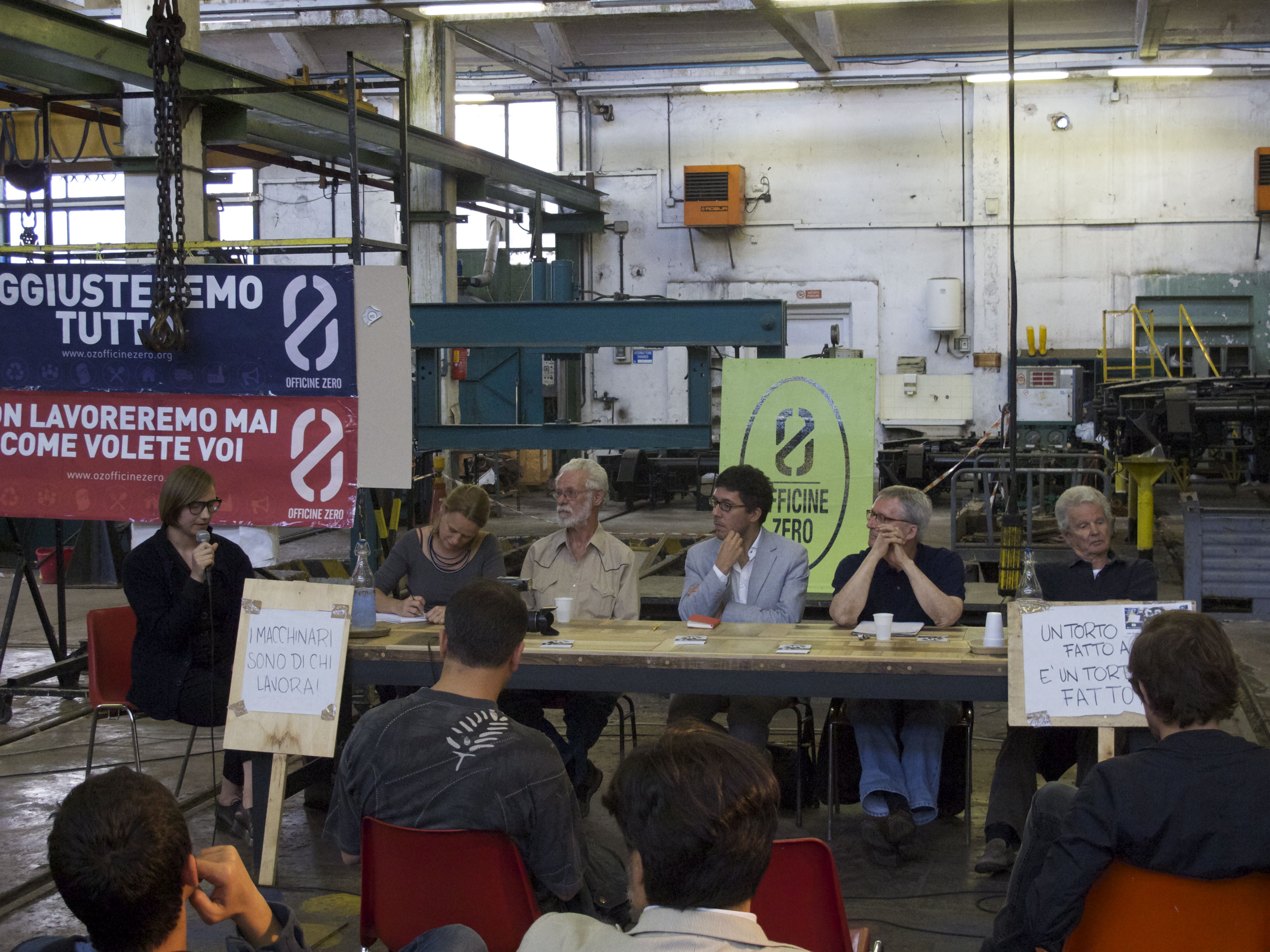Class Struggle, Trade Unions and the Imaginary in the U.S.
Officine Zero – via Umberto Partini, 20 Rome
Introduction
Biographies
Officine Zero – via Umberto Partini, 20 Rome
When we think of the 1930s and of the last century’s Great Depression, we remember fascism and, in the case of the United States, Roosevelt and the New Deal. But we don’t remember the extraordinary struggles that turned the New Deal into a moment of discontinuity – of a conquered “economic democracy” – in the history of capitalism.
Months and months of strikes and harsh clashes with the police and the National Guard, from San Francisco to Minneapolis in the west, and Georgia to Rhode Island in the east, succeeded in reshaping Rooseveltian policies to match the demands of the working class. From longshoremen to textile workers to auto workers, the people who had distanced themselves from the labor movement (the AFL) in the late twenties re-conquered it on a new field. We cannot understand the New Deal (and the Wagner Act in particular) without also considering the CIO (the Congress of Industrial Organizations, founded in 1935). The question of how to organize the unorganized, the emergence of new practices of struggle, such as the sit-down strike, and the capacity to transform class conflict into new political and social institutions were are all decisive elements.
Almost a century has passed, and the crisis of neoliberal capitalism is affecting the world. “Organizing the unorganized” – both now and in the United States the 1930s – is not just an ideological slogan. Rather, it is the perfect slogan for out times, one fit for all those who believe that change is a process made of great leaps, but also of daily steps to protect the new poor, the workers without rights, and the unemployed.
The United States during the Great Depression will be the subject of this debate, and of genealogical research looking at both the struggle and organizational practices adopted and the artistic forms and the social imaginary produced during that decade of class struggle.
This discussion is organized within the framework of Strike, Fred Lonidier’s first institutional solo exhibition in Europe as part of the series Openings Out to Reality, a project cycle initiated in 2012 by Istituto Svizzero in Rome, and whose aim is to research the interaction among the arts, its institutions and society at large.

Sergio Bologna was born in 1937. He taught at universities in Italy and Germany, researching the history of the working class and of industrial society.
Bruno Cartosio was born in 1943. He teaches history of North America at the University of Bergamo. He spent years researching and wrote many books on the social and cultural history of the United States.
Fred Lonidier was born in 1942. He is an artist, an activist and a union member. He taught photography at the University of California, San Diego
Lotta di classe, sindacato e immaginario negli USA - 28 maggio 2015, Istituto Svizzero di Roma © OKNO Studio